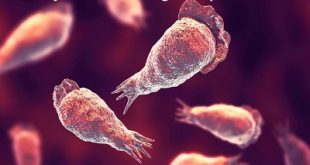Definition of Parathyroid Cancer
Parathyroid cancer starts in the cells of the parathyroid glands. A cancerous (malignant) tumor is a group of cancer cells that can grow into and destroy nearby tissue. It can also spread (metastasize) to other parts of the body.
The parathyroid glands are 4 pea-sized organs behind the thyroid in the neck. They are usually attached to the surface of the thyroid with 2 on each side. Parathyroid glands are part of the endocrine system. The endocrine system is the group of glands and cells that make and release hormones into the blood to control many body functions, such as breathing and circulating blood.
Location of parathyroid glands
Parathyroid glands make parathyroid hormone (PTH). PTH controls the amount of calcium in the blood. Most calcium is stored in the bones. When calcium levels in the blood are low, the parathyroid glands make PTH get the bones to release calcium into the blood. When calcium levels in the blood are high, the glands make less PTH.
Cancer in Parathyroid glands
Cells in any of the parathyroid glands sometimes change and no longer grow or behave normally. These changes may lead to non-cancerous (benign) tumors called parathyroid adenomas. Cell changes can also lead to a non-cancerous condition called parathyroid hyperplasia. But in some cases, changes to parathyroid cells can cause parathyroid cancer (also called parathyroid carcinoma). It is a very rare cancerous tumor.
Risk factors
- A risk factor is something that increases the risk of developing cancer. It could be a behavior, substance or condition. Most cancers are the result of many risk factors. But sometimes parathyroid cancer develops in people who don’t have any of the risk factors described below.
- Parathyroid cancer is very rare. Most people diagnosed with this disease are middle-aged. It affects men and women equally.
- Some people can have a higher than average risk for parathyroid cancer. Talk to your doctor about your risk. If you are at higher than average risk, you may need a personal plan for testing.
- Risk factors are generally listed in order from most to least important. But in most cases, it is impossible to rank them with absolute certainty.
Known risk factors
- Multiple endocrine neoplasias
- Hyperparathyroidism-jaw tumor syndrome
- Familial isolated hyperparathyroidism
Possible risk factors
- Radiation to the head and neck
- Certain gene mutations
- Secondary hyperparathyroidism
Parathyroid Cancer Causes
- When parathyroid cells become malignant (cancerous), they multiply abnormally and typically form a firm, greyish-white tumor that may invade the nearby thyroid gland and neck muscles.
- As a result of out of parathyroid cells, too much PTH is produced. High levels of PTH in the blood (hyperparathyroidism) with abnormally high levels of calcium in the blood (hypocalcemia) are the end result of most of these cases.
- The abnormal production of PTH forces the bones to pour out critical amounts of calcium leads to bone pain or osteoporosis (thinning of the bones) besides making kidneys retain large amounts of calcium, which triggers the formation of kidney stones.
- Owing to excessively high calcium levels, kidney damage, dehydration and changes in neurological function including confusion may happen. There could be an enlargement of the parathyroid gland, often due to a benign enlargement of the gland, called an adenoma.
There are three ways that cancer spreads in the body
Cancer can spread through tissue, the lymph system, and the blood:
Tissue: Cancer spreads from where it began by growing into nearby areas.
Lymph system: Cancer spreads from where it began by getting into the lymph system. The cancer travels through the lymph vessels to other parts of the body.
Blood: Cancer spreads from where it began by getting into the blood. The cancer travels through the blood vessels to other parts of the body.
Symptoms of Parathyroid Cancer
If the parathyroid tumor causes hyperparathyroidism, symptoms may include:
- Aches and pains
- Depression
- Abdominal pain
- Nausea
- Vomiting
- Fatigue
- Excessive urination
- Confusion
- Muscle weakness
The symptoms of a parathyroid tumor may resemble other conditions or medical problems. Always consult your doctor for a diagnosis.
Complications
Cancer may spread (metastasize) to other places in the body, most commonly the lungs and bones.
The most serious complication of parathyroid cancer is hypercalcemia. Most deaths from parathyroid cancer occur as a result of severe, difficult-to-control hypercalcemia, and not cancer itself.
Cancer commonly comes back (recur). Additional surgeries may be needed. Complications from surgery can include:
- Hoarseness or voice changes as a result of damage to the nerve that controls the vocal cords
- Scarring
- Infection at the site of surgery
- Hypocalcemia (low levels of calcium in the blood, a potentially life-threatening condition)
Calling your health care provider: Call your health care provider if you feel a lump in your neck or experience symptoms of hypercalcemia.
Diagnosis and test
Once blood tests are done and hyperparathyroidism is diagnosed, imaging tests may be done to help find which of the parathyroid glands is overactive. Sometimes the parathyroid glands are hard to find and imaging tests are done to find exactly where they are.
Parathyroid cancer may be hard to diagnose because the cells of a benign parathyroid adenoma and a malignant parathyroid cancer look alike. The patient’s symptoms, blood levels of calcium and parathyroid hormone, and characteristics of the tumor are also used to make a diagnosis.
The following tests and procedures may be used:
Physical exam and history: An exam of the body to check general signs of health, including checking for signs of disease, such as lumps or anything else that seems unusual. A history of the patient’s health habits and past illnesses and treatments will also be taken.
Blood chemistry studies: A procedure in which a blood sample is checked to measure the amounts of certain substances released into the blood by organs and tissues in the body. An unusual (higher or lower than normal) amount of a substance can be a sign of disease in the organ or tissue that makes it. To diagnose parathyroid cancer, the sample of blood is checked for its calcium level.
Parathyroid hormone test: A procedure in which a blood sample is checked to measure the amount of parathyroid hormone released into the blood by the parathyroid glands. A higher than normal amount of parathyroid hormone can be a sign of disease.
Sestamibi scan: A type of radionuclide scan used to find an overactive parathyroid gland. A small amount of a radioactive substance called technetium 99 is injected into a vein and travels through the bloodstream to the parathyroid gland. The radioactive substance will collect in the overactive gland and show up brightly on a special camera that detects radioactivity.
CT scan (CAT scan): A procedure that makes a series of detailed pictures of areas inside the body, taken from different angles. The pictures are made by a computer linked to an x-ray machine. A dye may be injected into a vein or swallowed to help the organs or tissues show up more clearly. This procedure is also called computed tomography, computerized tomography, or computerized axial tomography.
CT scan of Head and Neck
Ultrasound exam: A procedure in which high-energy sound waves (ultrasound) are bounced off internal tissues or organs and make echoes. The echoes form a picture of body tissues called a sonogram.
Angiogram: A procedure to look at blood vessels and the flow of blood. A contrast dye is injected into the blood vessel. As the contrast dye moves through the blood vessel, x-rays are taken to see if there are any blockages.
Venous sampling: A procedure in which a sample of blood is taken from specific veins and checked to measure the amounts of certain substances released into the blood by nearby organs and tissues. If imaging tests do not show which parathyroid gland is overactive, blood samples may be taken from veins near each parathyroid gland to find which one is making too much PTH.
Treatment
If your doctor finds parathyroid cancer, he/she will check to see if it’s spread. Sometimes cancer will break away and form a new tumor somewhere else in the body. Treatment is different in each case.
Surgery is the most common treatment for parathyroid cancer. The surgeon may take out just the tumor or remove other tissues too if cancer has spread to other places.
The following surgical procedures may be used:
En bloc resection: Surgery to remove the entire parathyroid gland and the capsule around it. Sometimes lymph nodes, half of the thyroid gland on the same side of the body as cancer, and muscles, tissues, and a nerve in the neck are also removed.
Tumor debulking: Surgery to remove as much of the tumor as possible. Sometimes, not all of the tumor can be removed.
Metastasectomy: Surgery to remove any cancer that has spread to distant organs such as the lung.
Surgery for parathyroid cancer sometimes damages nerves of the vocal cords. There are treatments to help with speech problems caused by this nerve damage.
Radiation therapy uses X-rays and other strong energy to attack cancer cells. Radiation may be used before or after surgery.
Radiofrequency ablation uses heat to kill cancer cells. It also reduces the PTH level.
Chemotherapy uses medicines to kill cancer. The type of medicine depends on the tumor.
Clinical trials are tests in which doctors try new drugs and methods. Ask your doctor if you’re a good candidate for one of these.
Prevention of Parathyroid Cancer
Screening for Parathyroid Cancer
- Cancer screening exams can help find parathyroid cancer at its earliest stage when the chances for successful treatment, optimal outcomes, and fewer side effects are greatest.
- These tests are usually done when a patient is healthy and has no specific symptoms.
 Diseases Treatments Dictionary This is complete solution to read all diseases treatments Which covers Prevention, Causes, Symptoms, Medical Terms, Drugs, Prescription, Natural Remedies with cures and Treatments. Most of the common diseases were listed in names, split with categories.
Diseases Treatments Dictionary This is complete solution to read all diseases treatments Which covers Prevention, Causes, Symptoms, Medical Terms, Drugs, Prescription, Natural Remedies with cures and Treatments. Most of the common diseases were listed in names, split with categories.








I have my wife who has been diagnosed with goitre some years back and she was put on levothyroxine tabs but then right now she complaint all the time of body pain. could it be the same to goiter?
Please consult a doctor.
my mum is having a growth on her lungs and I asked her if it’s hurts she said no I hope it’s not cancer when I touched it , it’s not hard
It is better to consult a pulmonologist to diagnose and prevent future effects.
Hi I have had complete thyroidectomy, after sometime I am noticing a ball like lump right on my throat pipe, around the Adams apple area, should I be worried?
please consult a doctor.
am having a malignant goitre ,can this cause cancer in later days?
It is highly recommended to have advice from an oncologist.
cancer is caused by mutations but their is an carcenogenic organim which virus cause cancer
The main viruses associated with human cancers are human papillomavirus, hepatitis B and hepatitis C virus, Epstein–Barr virus, human T-lymphotropic virus, Kaposi’s sarcoma-associated herpesvirus (KSHV) and Merkel cell polyomavirus.